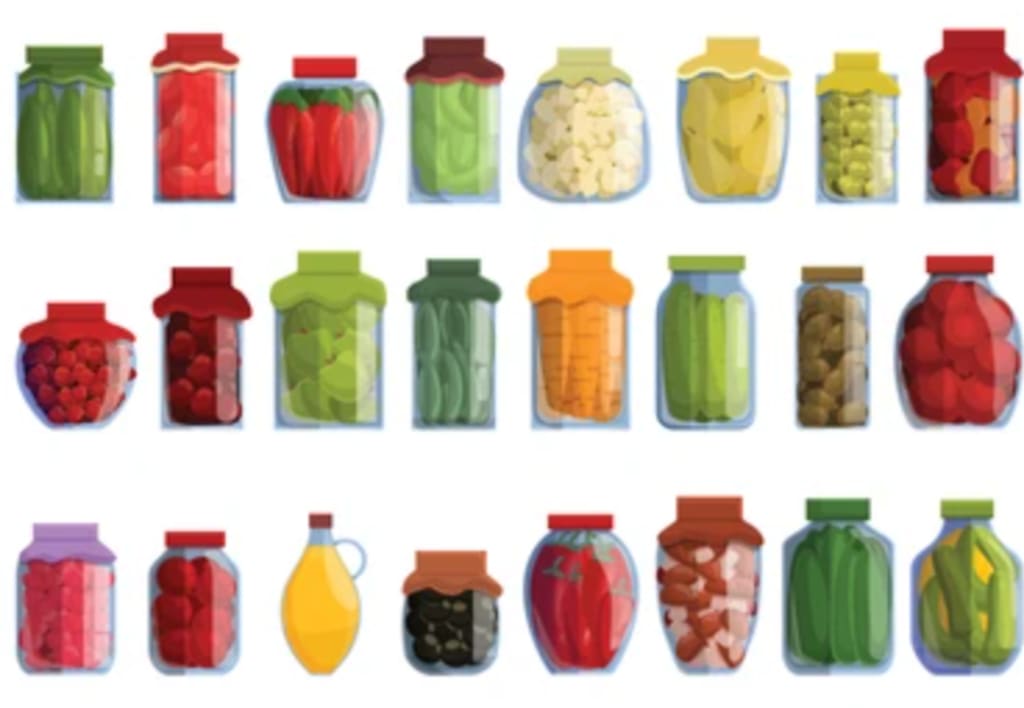How did our ancestors preserve food?
What are the ancient methods of food preservation?

### How Did Our Ancestors Preserve Food?
Food preservation has been a critical aspect of human survival and development throughout history. Our ancestors, faced with the challenge of ensuring food availability beyond immediate consumption, devised ingenious methods to store and preserve food. These methods varied across cultures and regions but shared a common goal: to prevent spoilage and extend the shelf life of perishable foods.
#### Ancient Techniques
1. **Drying (Dehydration):** One of the oldest methods, drying involves removing moisture from food to inhibit the growth of bacteria and mold. Ancient civilizations such as the Egyptians and Mesopotamians utilized the hot, dry climates to sun-dry fruits, vegetables, and meats. In colder regions, food was dried indoors over fires or using smoke (smoking) to add flavor and further preserve it.
2. **Fermentation:** This method harnesses beneficial bacteria and yeasts to preserve food. Examples include the fermentation of cabbage to create sauerkraut or kimchi, or the fermentation of milk to produce yogurt and cheese. Fermentation not only extends shelf life but also enhances flavors and introduces probiotics, aiding in digestion.
3. **Salting:** Salt has been a crucial preservative throughout history. It draws out moisture from foods, making it inhospitable to bacteria. Fish, meat, and even vegetables were preserved in salt brines or by dry salting. The Romans, for instance, used salt to preserve fish and meat for their armies and long journeys.
4. **Pickling:** Pickling involves submerging food in an acidic liquid, typically vinegar, which creates an environment hostile to bacteria. This method was widespread across ancient civilizations like the Greeks and Romans who pickled fruits, vegetables, and even meats to preserve them for extended periods.
#### Innovations Through the Ages
5. **Root Cellars:** Before refrigeration, underground root cellars provided cool, stable environments ideal for storing root vegetables, fruits, and even dairy products. The consistent temperature and humidity helped slow down the ripening and decay processes.
6. **Canning:** Developed in the 19th century, canning revolutionized food preservation by sealing food in sterilized containers (cans or jars) and heating them to destroy microorganisms. This method extended the shelf life of perishable goods like fruits, vegetables, and meats, making them available year-round.
7. **Freezing:** With the advent of mechanical refrigeration in the 20th century, freezing became a widely used method to preserve food. Freezing halts bacterial growth and enzymatic action, maintaining the quality of foods like meats, vegetables, and even prepared meals for long periods.
#### Cultural and Environmental Influences
Food preservation techniques often evolved in response to local climates, available resources, and cultural practices. For instance, Inuit people in the Arctic preserved meats and fish by freezing them in icy environments, while tropical cultures relied more on drying and fermentation due to the abundant heat and sunlight.
#### Conclusion
The methods our ancestors used to preserve food were not only about survival but also shaped culinary traditions and cultural identities. From ancient drying techniques to modern freezing technologies, each method reflects human ingenuity and adaptability in ensuring food security. Understanding these historical practices not only enriches our appreciation for food but also informs sustainable practices in food preservation today.
In essence, food preservation techniques developed over millennia continue to influence how we store, consume, and appreciate food in the present day, bridging the gap between our ancestors' wisdom and modern culinary practices.
### What Are the 7 Ways of Preserving Food?
Preserving food has been a fundamental practice throughout human history, ensuring sustenance during scarcity and extending the availability of seasonal harvests. From ancient techniques born out of necessity to modern innovations enhancing convenience and safety, here are seven key methods of preserving food:
#### 1. **Drying (Dehydration)**
Drying is one of the oldest and simplest methods of food preservation. By removing moisture from food, bacteria, yeast, and mold are inhibited from growing and causing spoilage. This method involves air-drying fruits, vegetables, herbs, and meats, either in the sun, using specialized equipment, or in low-temperature ovens. Dried foods can last for months to years if stored properly and are lightweight, making them ideal for storage and transport.
#### 2. **Canning**
Canning revolutionized food preservation in the 19th century with the invention of the canning process by Nicolas Appert and later perfected by Louis Pasteur. This method involves sealing food in sterilized containers (jars or cans) and heating them to destroy microorganisms that cause spoilage. The sealed containers prevent contamination, making canned foods shelf-stable for extended periods, often up to several years.
#### 3. **Freezing**
Freezing is a widely used method of preserving food by storing it at temperatures below freezing point (-18°C or 0°F). Freezing halts bacterial growth and enzymatic activity, preserving the nutritional content, texture, and flavor of foods such as fruits, vegetables, meats, and prepared meals. Vacuum sealing or using airtight containers helps prevent freezer burn and maintains food quality over longer periods.
#### 4. **Fermentation**
Fermentation harnesses beneficial bacteria, yeasts, or molds to preserve food and enhance flavor. Foods like sauerkraut, kimchi, yogurt, cheese, and sourdough bread are created through fermentation. This process not only preserves food by creating an acidic or alcoholic environment that inhibits spoilage but also introduces probiotics and enhances nutritional value.
#### 5. **Pickling**
Pickling involves submerging food in an acidic solution, typically vinegar, brine, or fermenting agents, to create an environment hostile to bacteria. This method preserves the texture, flavor, and nutritional value of foods such as cucumbers (pickles), onions, beets, and even meats like corned beef. Pickled foods can be stored for months in sealed containers in cool, dark places.
#### 6. **Smoking**
Smoking is a preservation method that combines drying, curing, and flavoring by exposing foods to smoke from burning or smoldering plant materials, typically wood. This process not only imparts a distinctive smoky flavor but also creates a protective coating on the food's surface, inhibiting bacterial growth. Smoked meats, fish, and cheeses are popular examples of foods preserved through smoking.
#### 7. **Root Cellaring**
Root cellaring utilizes underground storage spaces or specially designed rooms to store fruits, vegetables, and root crops like potatoes, carrots, and apples. These environments provide cool temperatures, high humidity, and darkness, ideal for slowing down the ripening and decay processes. Root cellaring extends the shelf life of fresh produce without the need for electricity or modern refrigeration. The Lost Superfoods Review
#### Conclusion
The art and science of food preservation have evolved over centuries, driven by the need for food security, cultural traditions, and technological advancements. Each method of preserving food offers unique benefits, from enhancing flavor and nutritional value to ensuring food availability during adverse conditions. Understanding these preservation techniques not only connects us to our culinary heritage but also empowers us to make informed choices about food storage and sustainability in the modern world. Whether drying fruits in the sun, canning summer vegetables, or fermenting homemade pickles, these methods continue to play a vital role in maintaining food quality and diversity across cultures and generations.
About the Creator
peter
Content about cars, motorbikes, technology, news
Enjoyed the story? Support the Creator.
Subscribe for free to receive all their stories in your feed. You could also pledge your support or give them a one-off tip, letting them know you appreciate their work.






Comments
There are no comments for this story
Be the first to respond and start the conversation.